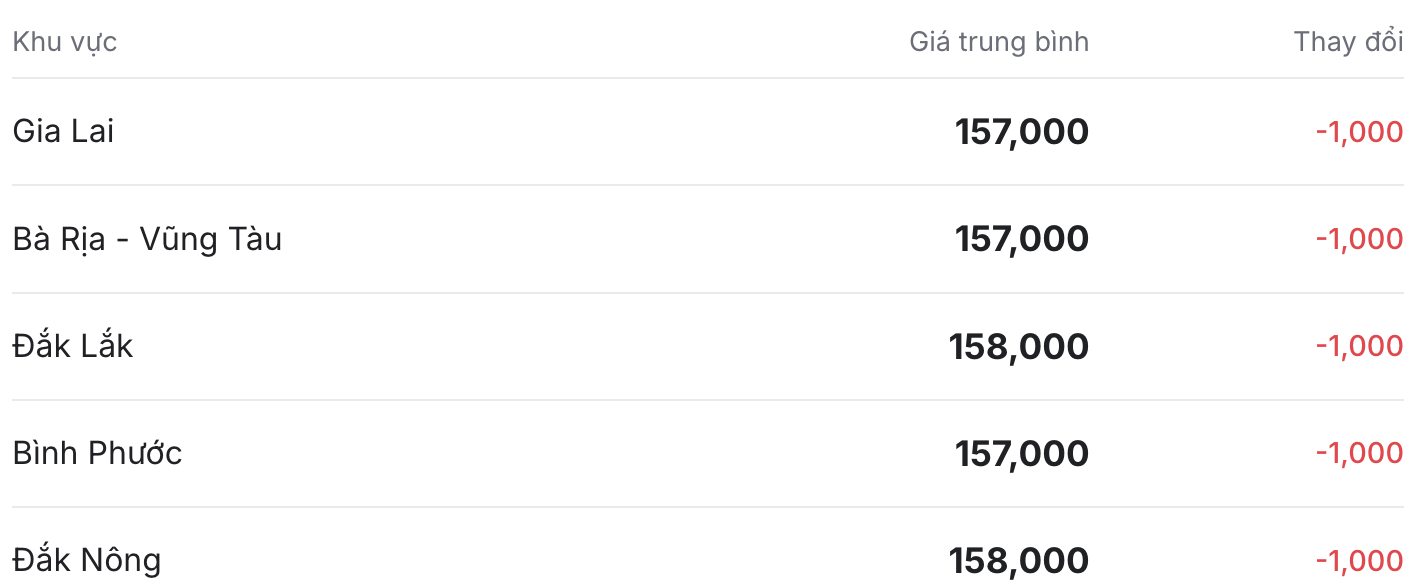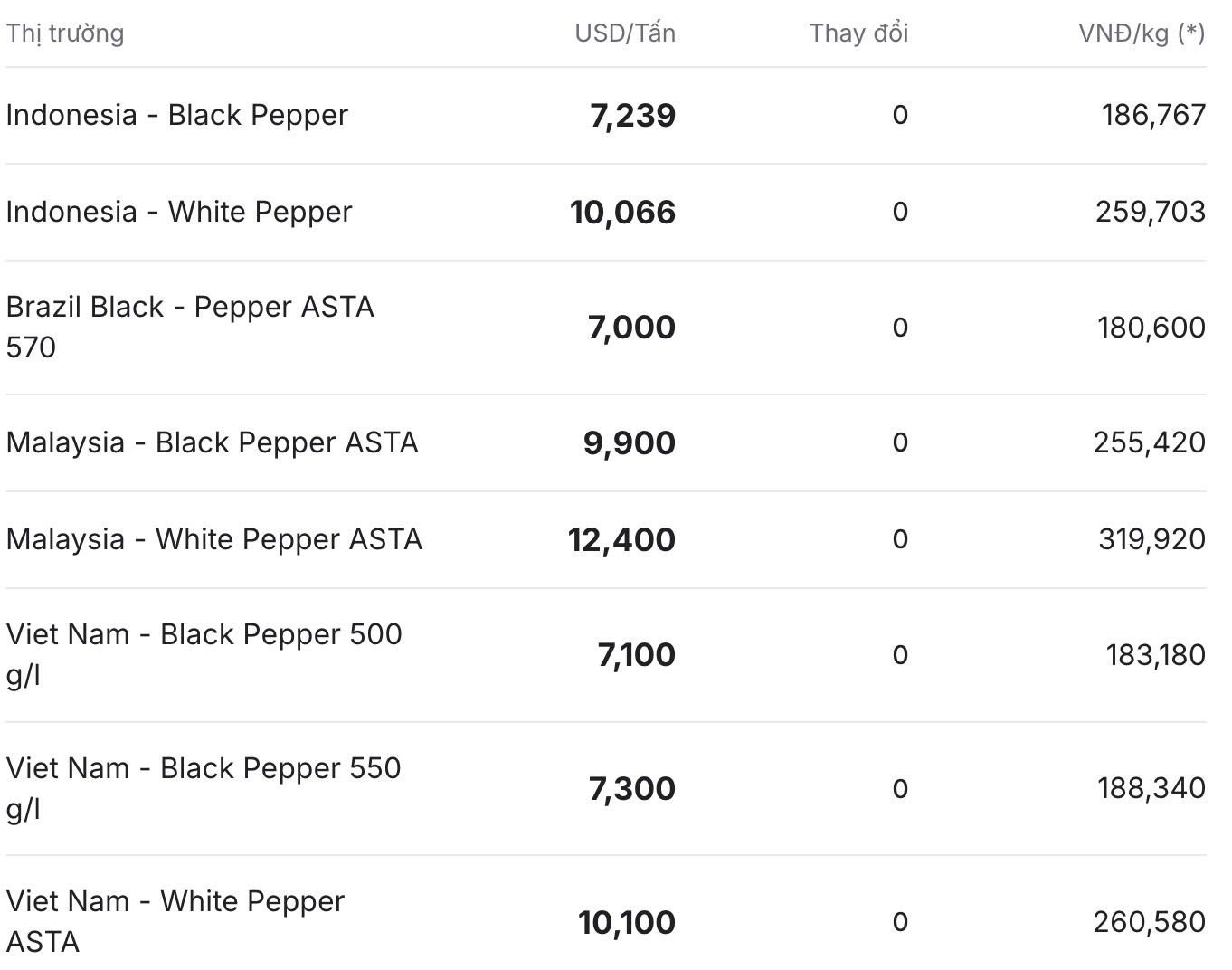Domestic pepper prices: Continue to adjust
As of 11am today (1.), domestic pepper prices continued to adjust prices, with an average decrease of VND 1,000/kg. Currently, the purchase price ranges from 157,000 - 158,000 VND/kg. The average pepper purchase price nationwide is at 157,400 VND/kg.
Pepper prices fell by 1,000 VND/kg, setting at 157,000 VND/kg in the three provinces of Gia Lai, Ba Ria - Vung Tau, Binh Phuoc.
At the same rate of 1,000 VND/kg, Dak Lak and Dak Nong provinces announced pepper purchasing prices at 158,000 VND/kg.

World pepper prices: Maintain stability
According to the International Pepper Community, on the exchanges, the price of black and white pepper in the Indonesian market is stable. Black pepper prices fluctuated around 7,239 USD/ton (equivalent to 186,767 VND/kg). The price of white pepper announced is 10,066 USD/ton (equivalent to 259,703 VND/kg).
For the Brazilian market, the price of ASTA 570 black pepper remains at 7,000 USD/ton.
In the Malaysian market, ASTA black and white pepper prices are anchored at 9,900 USD/ton and 12,400 USD/ton, respectively.
Notably, in Vietnam, the price of black pepper for export has moved sideways. The 500 g/l type is traded at 7,100 USD/ton (equivalent to 183,180 VND/kg); the 550 g/l type is currently at 7,300 USD/ton (equivalent to 188,340 VND/kg). Similarly, the price of white pepper for export also increased to 10,100 USD/ton (equivalent to 260,580 VND/kg).

In the Indian market, pepper prices continued to remain unchanged in most pepper prices. Garbled pepper costs 67,200 rupees/kg, (equivalent to 208,892 VND/kg), Ungarbled is listed at 65.200 rupees/kg, while gram/liter has the lowest price of 64,200 rupees/kg (exchanged at 199.566 VND/kg).

Assessment and forecast
According to experts, pepper prices are currently affected by many important factors. One of them is the decline in output in major producing countries such as Vietnam, Indonesia and Brazil, due to harsh weather conditions. In addition, pepper consumption demand is increasing sharply as major markets such as the US and Europe boost imports to meet the demand in the food and spice industry.
In particular, the USD remains high, creating favorable conditions for pepper prices on the international market. However, the supply from Vietnam is still quite limited, as farmers and traders continue to store goods and only sell a small amount after each harvest season.











